How are length discrepancies in the toes treated?
Length discrepancies in the toes generally refers to discrepancies of the metacarpal and metatarsal bones (the long bones in the hands and feet). Length discrepancies of the metatarsal bones leads to the toe bone protruding (sticking out) over the foot as well as shortening. There is difficulty with wearing shoes, and it creates pain as well as an unattractive appearance. Because of the pressure inside the shoe created by the toe discrepancy, bunions can occur. In addition, due to an uneven weight distribution on the soles of the feet, calluses and other walking disorders can also occur.
The patient in the first case experienced this condition in the 4th toe in the year 2000. In the second case, it is seen on the first toe (Morton's toe). It could have also been the result of a condition from birth which developed based on other factors. In cases in which it is congenital, it can be seen on both sides as well as in the hands. Later causes include trauma, infection, Freiburg's disease, radiation therapy, sickle cell anemia, epiphyseal dysplasia, rheumatoid arthritis, past foot operations, hormonal diseases (pseudohypoparathyroidism).
For treatment lengthening surgery is performed. If the discrepancy is less than 1 cm, acute lengthening (one time during surgery) is preferred, while for more significant cases, lengthening is done gradually (with the use of an external fixator). If the discrepancy is seen in more than one of the bones, which is very rare, lengthening some parts while shortening others may be preferred.
Depending on the treatment technique, problems that may arise during the lengthening process include: deformity, over- or under-lengthening, nonunion in the lengthened bone, protrusion in the toe, and stiffness in the toe joints.
How is it treated?
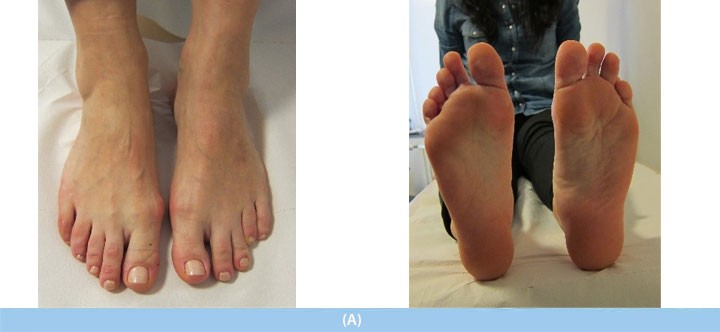
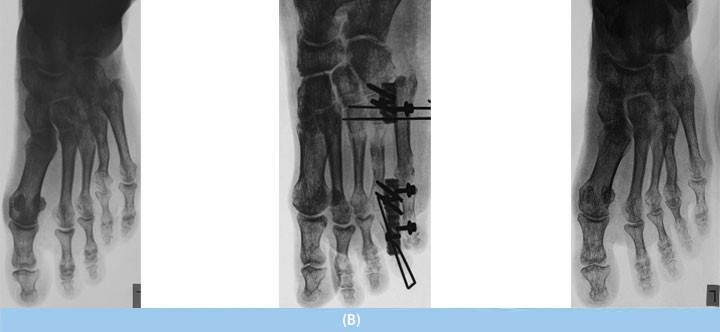
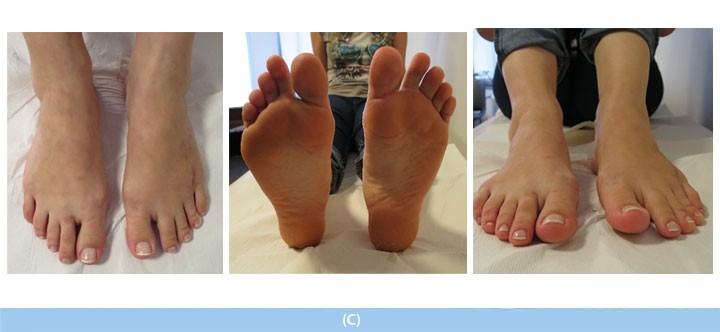
There was a length discrepancy in the 4th toe (age 45).
A) A year before, lengthening had been done at a different location, but the treatment had failed. There appears to be a length discrepancy in the 4th toe on the left foot.
B) During the treatment, X-rays were taken both during and after the lengthening.
C) The 4th toe was lengthened as part of a 3-month treatment. Looking at the foot from both the front and below, it appears that all the toes are even. She can now comfortably wear any type of shoe.
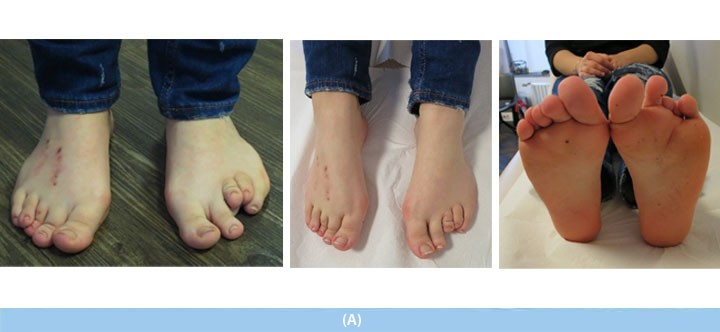
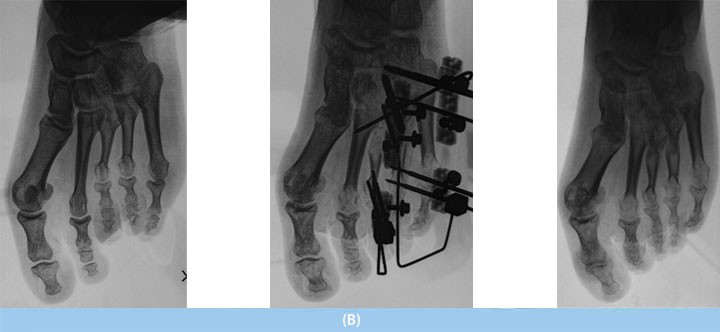
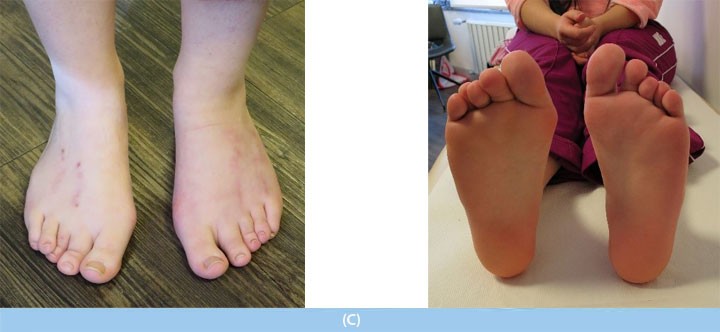
A) One year before the toe lengthening, the patient had undergone surgery at a different medical center, but the surgery had been unsuccessful; there was insufficient fusing of the bone on the right side and there was deformity in several of the toes (age 16). Due to the length discrepancy of the 3rd and 4th toes on the left foot, the toes were protruding on the foot, which caused problems with wearing shoes in addition to cosmetic issues.
B) During treatment for the left foot, X-rays were taken both during and after treatment.
C) The 3rd and 4th toes were lengthened as part of a 3-month treatment. Looking at the foot from both the front and below, it appears that all the toes are even. She can now comfortably wear any type of shoe. The treatment was done during summer vacation to not interfere with the school year.
Leg Length Discrepancy
and Limb Deformities
in Children
Leg Length Discrepancy
and Limb Deformities
in Adults?
Nonunions
and
Osteomyelitis
Achondroplasia
(Nanism)
Cosmetic
Leg Lengthening
How are length
discrepancies in the
toes and arms treated?
Length Extension
Techniques
- Lengthening Nails
- External Fixators
- Combined techniques
